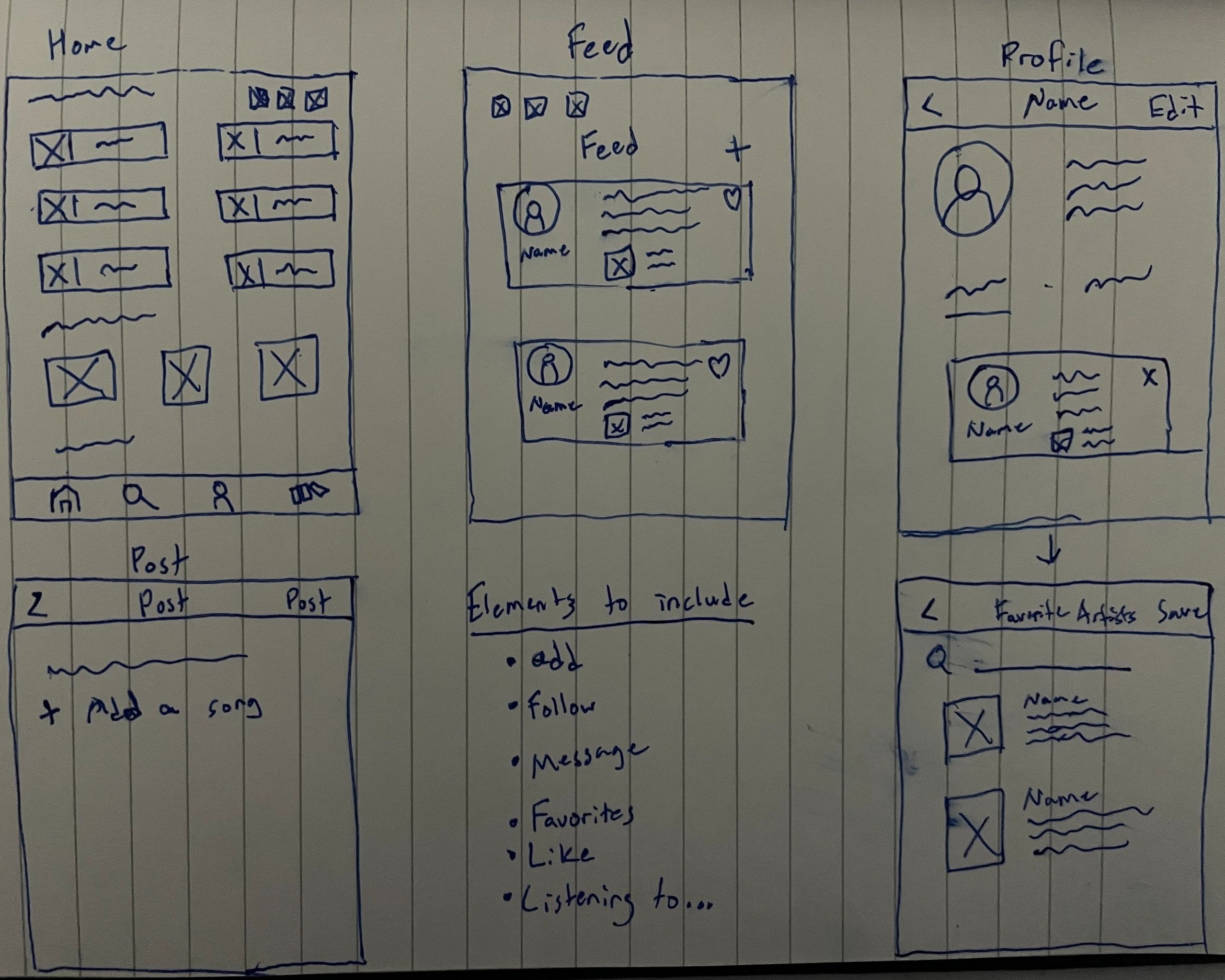Spotify Social.
Let’s make music social!
Update: Over 1,000 duplications on Figma!
Within this UX case study, I had the opportunity to leverage Figma, user research tools, and user testing to achieve a pivotal objective. The project's core mission was to empower music lovers, our end-users, with seamless navigation and interaction within a novel Spotify social media feature. Through a meticulous approach, we identified and addressed their specific needs, goals, and significant pain points, ultimately enhancing their overall user experience.
Product 📱
Spotify Social is a social media feature added to the already common Spotify mobile app. The main purpose of this feature is to add more interactivity to the app by giving the users a power to connect and socialize with others.
Problem 🤔
Frequent Spotify users need a platform to exclusively talk about music with others rather than having to share their musical experiences across other social platforms.
Goal 🎯
Design a social feature for Spotify that is easy to use and adds a familiar “social media” aura to it in order to keep it intuitive yet insightful.
Role 🙋♂️
Lead UX Designer
Responsibilities 📋
As the Lead UX Designer, I had responsibilities from conception to delivery as well as making sure that the research we were doing was sufficient enough to make our design decisions.
Duration 📅
September 2021 - December 2021 (3 Months)
Overall Process
User Research: Summary
I conducted user interviews/surveys and created empathy maps in order to further understand my end-users’ needs, wants, and behaviors. One primary user group resulted in being college students who want to exclusively discuss music on an already common music streaming platform. The other primary user group that was identified were teenagers who weren’t familiar with a Spotify subscription and its layout but instead are very familiar with other social media platforms such as Instagram and Twitter.
User Research: Pain Points
Procedural: In order for users to share their musical interests they have to interact with both a social platform and streaming platform.
Difficult to Use: Some users have a hard time understanding the workings of a social media application.
Engagement: It is hard to stay engaged on a music streaming app because it only offers one service (streaming music).
User Personas
User Journey Map
Persona: Julia
Goal: Post about a new song that she just discovered.
Paper Wireframes
Digital Wireframes
Lo-fi Prototype
Down below is one of the interaction flows of the digital wireframes. In this instance, the flow shows how a user can go edit their selection of favorite artists, starting from the home screen.
Usability Study: Parameters
Study Type: Unmoderated usability study
Location: Boise, United States | Remote
Participants: 5 participants, age 14-26
Length: 15-25 minutes
Usability Findings
Structure: Overall, the participants liked how the overall layout was with the app but they also wanted a clear distinction on between each page as the user has to get familiarized with the page completely in order to understand what the page’s purpose is.
Wow Factor: Users wanted the same “listening to…” page from the web app on the mobile app.
Communication: The overall purpose of this project was to add more connectedness between users. In order to do so, the participants wanted more communication features such as directly messaging someone a specific song or a way to comment on each other’s posts and playlists.
Hi-fi Prototype
And here we have it! The final prototype of the same task up above for the lo-fi prototype. With the collection of my user research, wireframes, user testings, and lo-fi prototypes I was able to produce all interactions and flows for the application. Check it out for yourself!
What I Learned 🧠
After running through each iteration thoroughly, I realized the significance within user research especially when conducting different methods such as interviews and surveys. These methods provided immense valuable insight on how to design in a user-centric manner and how to put the user’s needs, wants, and motivations ahead of any other factors. It also proves how accommodation can lead to a better product in general, so it is ultimately a win-win!























